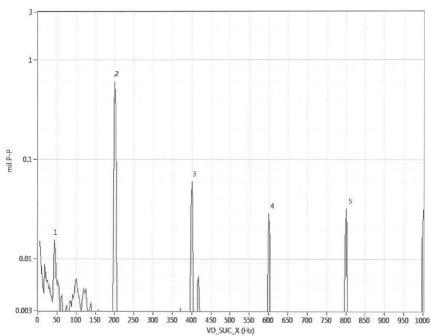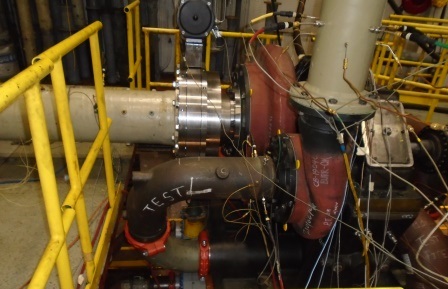Centrifugal Compressor Vibration Testing and Analysis
This article describes about centrifugal compressor vibration testing, analysis and limits based on API Std. 617. The API 617 only requires the vibration being measured at shaft adjacent to the bearings during the aerodynamic performance test and in the mechanical running test.
The proximitor probe is used for measurement and usually is handled by 4 probes, two for suction bearings X and Y axises and two for discharge bearing same X and Y axises.
2 Free CPD Hours Courses - Completely Free
Enroll, Watch the Video, Take the Test, Download Your Cert and Submit to the API . 2 free courses are availble each with 2 hours credit. (Total 4 hours) - 1) ASME V Articl II , 2) ASME V Article 6 & 7

API Std. 617 Limits for Centrifugal Compressor Vibration Amplitude
As per API 617, the maximum allowed overall vibration shall be
√(12000/N) or 1.0 mil whichever is less (N is the Rotor Speed)
for example, if your centrifugal compressor speed is 18000 rpm, the maximum allowed vibration amplitude is √(12000/18000) = 0.87, so the 0.87 is less than 1 then maximum allowed vibration amplitude for your compressor is 0.87 mil
The API 617 also requires that the discrete nonsynchronous vibration shall not be more than 120% of maximum allowed value for overall vibration.

In above example, the maximum allowed discrete nonsynchronous vibration is 1.2 x 0.87 = 1.044 mil
Please note this concession is for nonsynchronous vibration and does not apply for synchronous discrete vibration. In above example, the vibration amplitude at the frequency of 18000 cpm or 300 Hertz(which is synchronous frequency) shall be maximum 0.87 mil (the same as overall vibration)
The API 617, also requires at any speed greater than MCS up to trip speed, the discrete vibration shall not increase more than 0.5 mil above recorded value for MCS just before increasing speed to the trip speed.
The standard also requires the frequency range be in the range of 0.25 to the 8 times of the MCS. In above example, the frequency range shall be 3000 cpm to the 96000 cpm or 50 to the 1600 Hertz.